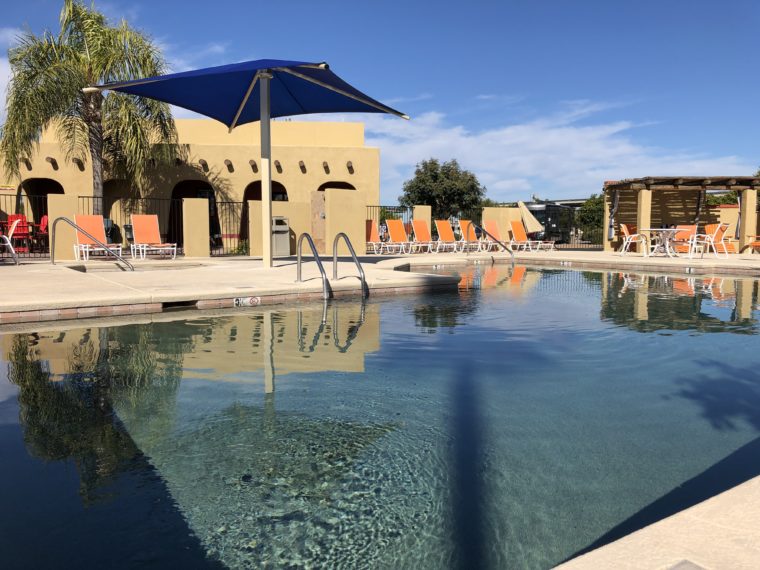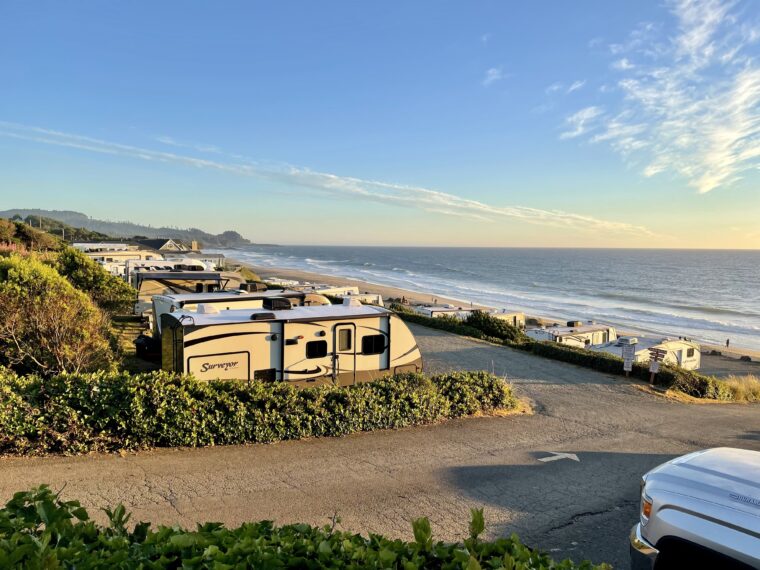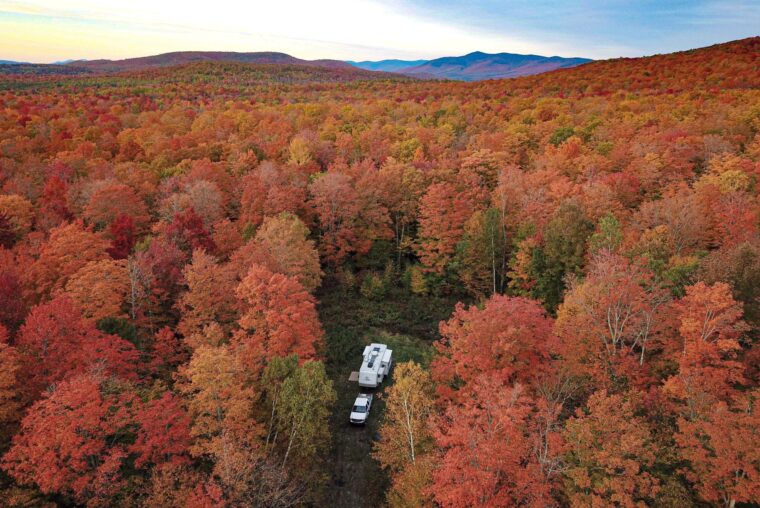Dreaming of gazing out on fields of ice and mountain peaks? While Glacier National Park is one of the most notable spots to see the few remaining glaciers in the contiguous U.S., there are a handful of other locations with massive ice fields perched amid mountain peaks, providing good camping alternatives for fans of Glacier National Park.
Despite its beauty, some visitors may hold back or have to cancel plans to visit Glacier due to weather, wildfires, and overcrowding. Due to its latitude and altitude, winter weather persists much of the year, with snow generally hitting the park anywhere from mid-October to mid-June. The park’s region also has regular wildfires due to dry conditions. Plus, it often ranks among the top 10 most-visited national parks, meaning you may find congested conditions during the short peak season.
While these drawbacks chase some travelers away, many visit and love the park so much they’d like to find similar experiences elsewhere. Whether you are already a fan of this Montana wonder or only dream of visiting, here are some camping alternatives similar to Glacier National Park.
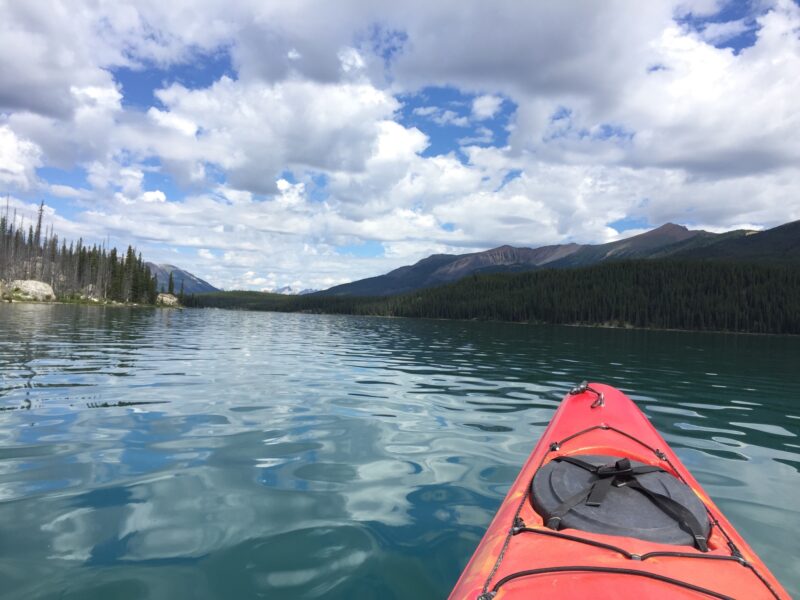
Glacier National Park’s Canadian Cousins
If you love Glacier National Park, grab your passport and continue north to Canada’s Banff National Park and Jasper National Park, which offer similar scenery on an even grander scale. The drive between the three parks is worth the journey alone, as a mere 7 hours takes you from Glacier, across the Canadian border, through the city of Calgary (where skyscrapers rise from the prairies), along the picturesque Icefields Parkway, and deep into the heart of the Canadian Rockies.
The Columbia Icefield is 125 square miles of glaciers set amid some of the highest peaks in the Canadian Rockies, which top 11,000 feet in elevation. For the best views without a hike, check out the glass platform at the Columbia Icefield Skywalk. Or, set out to explore the region on foot, with a hike to the ice, so you can say you’ve touched a glacier. A number of trails lead to Jasper’s Athabasca Glacier.
While the glaciers and peaks get a lot of attention, the crown jewel of the region might be the splendid opalescent lakes created by the melting ice, with shockingly turquoise waters. Lake Louise is among the most well-known, but you can find many others across the region. Some are easy to reach from roadside parking lots, while others are the reward at the end of a strenuous hike, taking you far from the throngs of crowds admiring the easy picks.
Camping options in the greater Banff and Jasper region include:
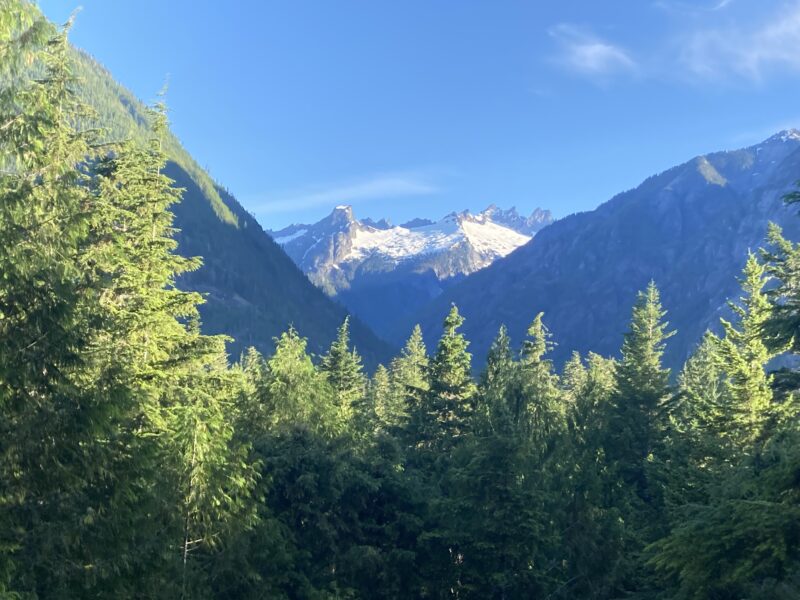
Camping Alternative to Glacier National Park with Grand Glaciers
Alaska’s Wrangell St. Elias National Park and Preserve is considered the best spot for glacier exploration; however, its remote location means it often doesn’t get crossed off many bucket lists. Within the contiguous U.S., the closest comparison to Glacier National Park may be North Cascades National Park, which has more than 300 glaciers.
Located in northern Washington, North Cascades is one of the least-visited national parks, drawing around 30,000 visitors annually, compared to Glacier’s nearly 3 million. Those numbers are somewhat misleading, as most who venture to this region actually visit the greater North Cascades National Park Complex, which includes some units that receive more visitors than the actual national park.
To reach the epic views of North Cascades National Park’s glaciers and peaks requires more work than seeing the sights in other national parks. Over 93 percent of the park is protected from human alterations. Only dirt roads take you into the park. Because of this, most travelers make the drive to Ross Lake National Recreation Area, which protects three jeweltone lakes and a scenic section of the Skagit River. This is where you’ll find more accessible recreational opportunities, like boating, fishing, and hiking. To explore within North Cascades National Park proper, plan for backpacking and off-grid campouts.
For some epic views with more accessibility, make the 4-hour drive south to Mount Rainier National Park to find one grand mountain featuring 25 major glaciers. Wildflowers fill the hillsides in the spring, promising picturesque views from many hiking trails. The easy-to-reach Myrtle Falls offers one of the best photo ops in the park, with Mount Rainier rising over a cascading waterfall.
Camping options near North Cascades and Mount Rainier national parks include:
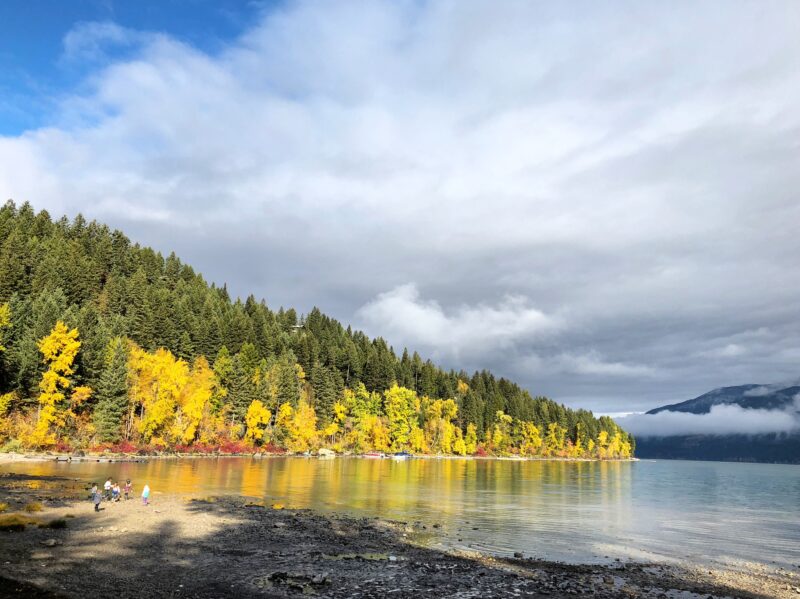
Glacier National Park Camping Alternatives in the Surrounding Region
For more Montana adventures, explore the greater Big Sky Country beyond the national park boundaries. The region between Glacier and Yellowstone National Park is primed for pairing with these popular parks—or a worthy destination all its own. While Montana has a generous amount of mountain peaks, the flatlands between them and the views from the peaks have helped give the region its Big Sky moniker.
Take a drive along the Beartooth Highway through the Beartooth Mountains, hike to the top of St. Mary Peak in the Bitterroot Mountains, or cast a line into the Gallatin River south of Bozeman. From rugged adventures to luxury ski resorts, this region offers boundless adventures amid the scenery. More than 20 national and state forests can be explored across the state, making it easy to enjoy the beauty—without the crowds of Glacier.
For more rugged adventures, set out to explore the Flathead National Forest, which comprises more than 2 million acres surrounding Glacier National Park. You’ll find 2,000 miles of trails, taking you to waterfalls, lakes, alpine meadows, and mountain summits. More than 30 camping areas are available, and dispersed camping is allowed.
Camping options in Montana include:
If you’re all about glaciers, there are many locations to explore in Glacier National Park and beyond. Some of these ancient wonders are melting quickly, so it’s good to plan your grand glacial road trips sooner rather than later, as this is one piece of natural beauty that will not last as long as the surrounding mountain peaks.













